The Kumquat tree survives well in almost any soil pH. Make sure your soil drains water easily. Kumquat is a citrus tree loving the sun. It is vital and tolerant to cold temperatures (but not to frost). Kumquats need fertilizer during their active growth cycle. You don’t have to fertilize your trees in the winter months when the trees are semi-inactive. Your tree’s health is reflected in the appearance of leaves while growing the Kumquat tree. If the Kumquat leaves start getting brown spots, your Kumquat tree is not getting enough water.
The best way to provide your Kumquat tree with the right amount of water is to provide water well and deeply, then allow excess water to be drained out. The amount of nutrients your Kumquat plant gets is reflected in the state of the leaves. If Kumquat leaves are dark, rich green, the tree is getting enough nutrients. If leaves are cracked or bleached, there cannot be enough nutrients. When planting Kumquat trees, you want to nurture and maintain plants by avoiding artificial fertilizers. Let’s check out the best fertilizer for Kumquat tree.
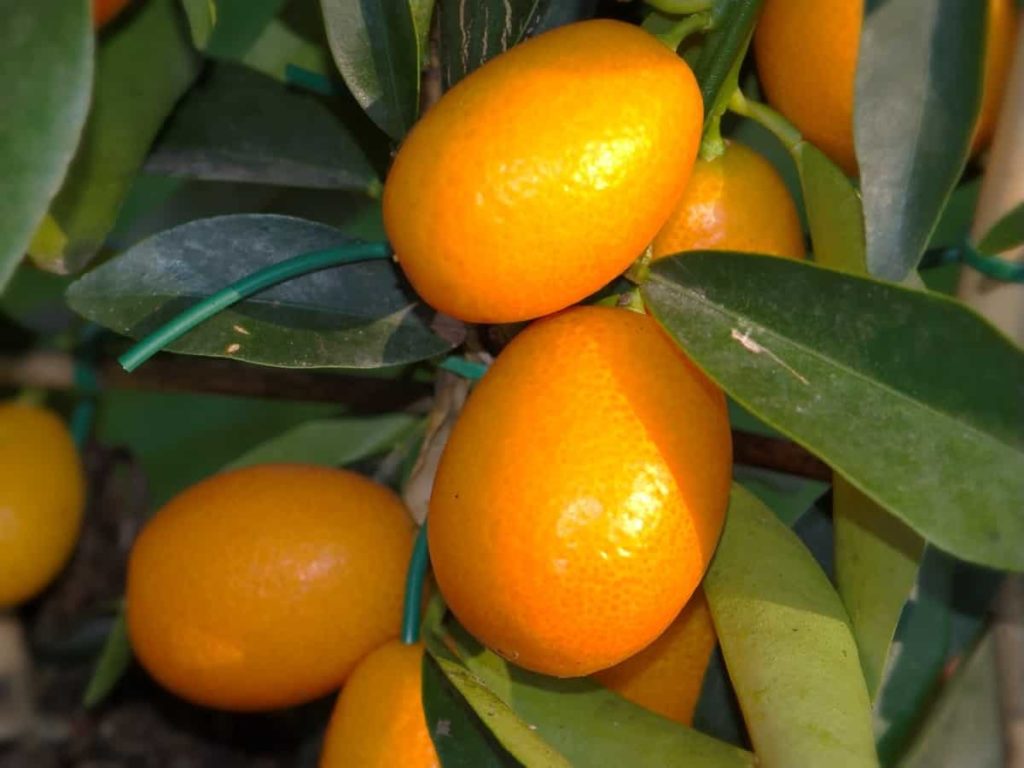
The Kumquat trees can be 6 to 8 feet long in appropriate circumstances. If it seems strange that the Kumquat tree needs food, it makes sense when you consider its fruit. Kumquat fruit is a true delicacy, not because of its delicious flavors. It also has beautiful bright orange skin protecting the tree from disease and pests. The outer skin of the Kumquats is filled with beneficial antioxidants.
All this healthy goodness is the result of a tree that grows well. And the Kumquat tree is sensitive to the type and quality of fertilizers used. Don’t be tempted to use the same artificial fertilizer (with more chemical ingredients) that you use in your vegetable garden.
Best fertilizer for Kumquat tree
Homemade fertilizers for Kumquat
- Epsom salt – Adding some Epsom salt (magnesium sulfate) helps develop green leaves. That is why magnesium (such as Epsom salt) or chelated iron is recommended as some supplement mineral for Kumquat. One tablespoon can be mixed with a gallon of water and sprayed directly onto the leaves for a more direct approach.
- Coffee grounds – Citrus like a bit of acid soil and are heavy feeders, meaning they use high nitrogen and a small amount of phosphorus. Coffee grounds are probably good every 1 to 2 months, and near the trunk is a good mulch if dry.
- Wood ash – Wood ash is a highly alkaline fertilizer; it is not ideal to use it as fertilizer. However, if you find out that the soil of your citrus tree is very acidic, adding some wood ash to increase the pH and make it more alkaline can help.
- Low potassium can cause Kumquat fruit to drop. Potassium organic sources are crab waste, banana peels, wood ash, and green sand. Dig some of these items in the soil around your tree before watering. Potassium will be leached in the soil and absorbed from your Kumquat tree.
In case you missed it: Best Fertilizer for Citrus Tree: Homemade, Organic, Natural, Liquid, Compost, How and When to Apply
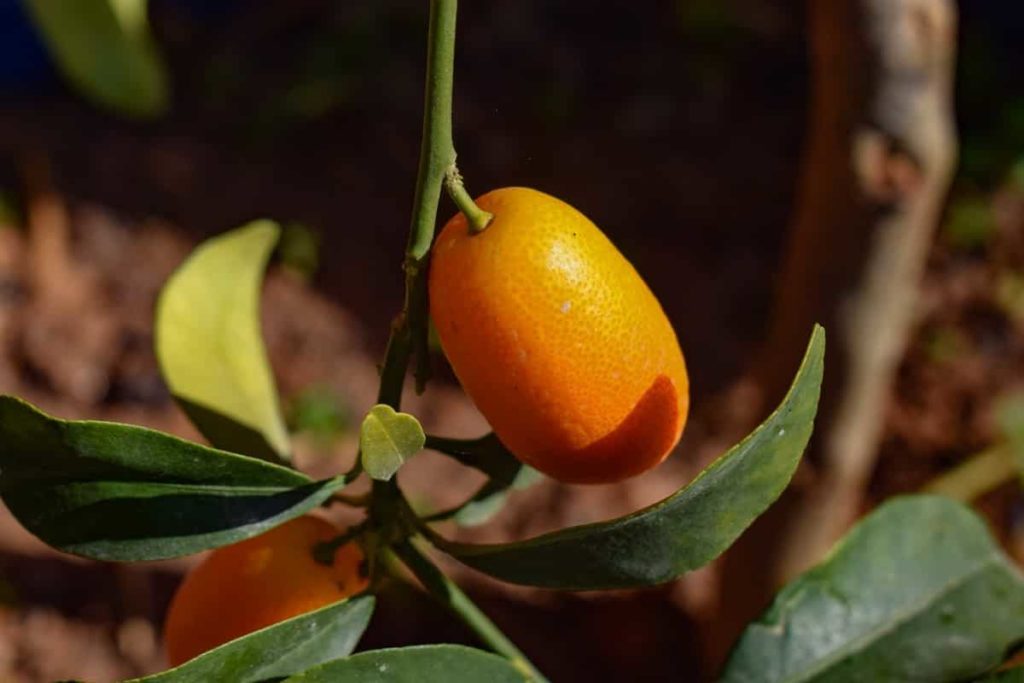
Natural fertilizers for Kumquat
Mulch with a 2 to 3-inch layer of organic mulch like chopped leaves. Mulch helps in maintaining moisture in the soil and suppressing weeds. Mulch keeps the roots warm in winter. Keep the mulch well away from the tree’s stem, as a wet trunk can attract disease.
Compost manure for Kumquat
- Compost – If you are sure your Kumquat tree is deficient in nutrients, add compost; it has a neutral pH, and you may need to mix some coffee grounds, sand, or peat moss to increase acidity. Giving a good dose of compost to your Kumquat tree can help it absorb phosphorus already present in the soil.
- Manure – The addition of manure and organic mulch will also help feed the plant and protect the soil. Remember to avoid touching the mulch directly at the tree’s trunk.
Liquid fertilizer for Kumquat
- In addition to the cold winter months, as the plant grows, feed it on dilute liquid, such as the occasional fish emulsion or liquid kelp. During the growing season, regular applications of a combination of seaweed and fish emulsion are a good idea. Constantly water well before applying liquid fertilizer.
- Seaweed – Regular applications of the seaweed extract will encourage healthy flowering, fruit, and root development.
Organic fertilizers for Kumquat
- Bone meal – Nitrogen (found in fertilizer and blood and bone) will encourage the growth of healthy leaves, but it is too late in the season (when trees are taking properly mature fruits) can encourage thick skin and dry fruits. If you feel that the Kumquat tree needs more phosphorus, try giving it a bone meal that is high in phosphorus and natural quantities.
- Alfalfa meal – Kumquat trees also use a lot of nitrogen like other citrus trees. A lack of nitrogen during an increasing period can cause fruit to fall. Alfalfa meal is the best organic source of nitrogen.
In case you missed it: Growing Plants In Paint Buckets For Beginners
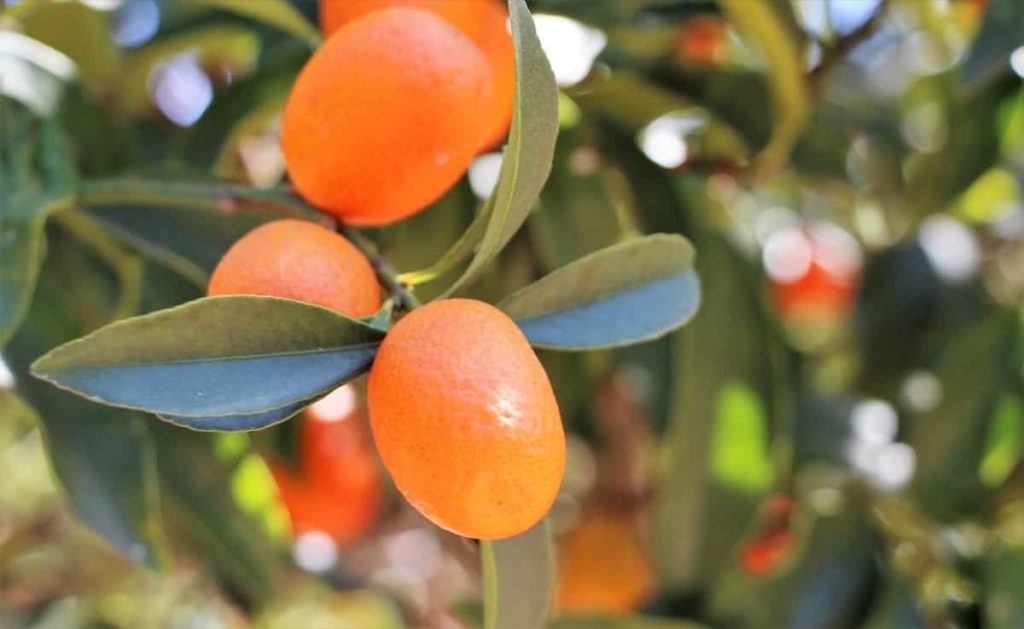
Commercial fertilizers for Kumquat
NPK ratio
In addition to the cold winter months, Kumquat plants need regular fertilizer. In spring, the plant feeds with an all-purpose, slow-released citrus fertilizer. Fertilize the Kumquat tree with a suggested formula for use on citrus trees (complete fertilizers like 10-10-10, 8-8-8, etc.). Fertilizer is essential as soil may not be able to provide all essential nutrients to the tree. Kumquat trees need proper nutrients to grow roots, leaves, flowers, and fruits.
For Kumquat and mostly citrus trees, the most important nutrients are nitrogen, magnesium, phosphorus, and potassium and other nutrients are magnesium, boron, zinc, copper, and iron. The fertilizer you choose should contain good ingredients for all the aforementioned nutrients. Yellow leaves usually indicate a lack of nitrogen, and yellow leaves can suggest many problems. Yellow leaves with chlorosis or green veins often mean that your Kumquat tree needs more zinc. And yellow leaves usually indicate a lack of potassium, iron, or magnesium starting from the top
of the tree rather than below. Zinc is essential in small quantities to help produce chlorophylls and activate photosynthesis. You can usually apply zinc through the soil where your tree is planted.
Kumquat fertilizer schedule
It is essential to have a properly balanced pH to give healthy fruit to the Kumquat trees. Like most citrus trees, you can also plant Kumquat trees in soil with a wide range of pH values. However, slightly acidic soil with about 6 to 7 pH is the perfect balance for the Kumquat trees. If your soil has a very high or low pH value, most nutrients are less available to the tree. More acidic soils can reach toxic levels of nutrients.
A balanced pH in soil provides the right amount of nutrients for growth and fruit support. The occasional fertilizing in the spring and summer months will help promote healthy root systems. Apply a citrus fertilizer to the soil during the growing season, almost every six weeks, or as the label directs. Fertilizers can boost flower and fruit production and increase the overall health of trees.
In case you missed it: Growing Fruits in the Backyard – A Full Guide
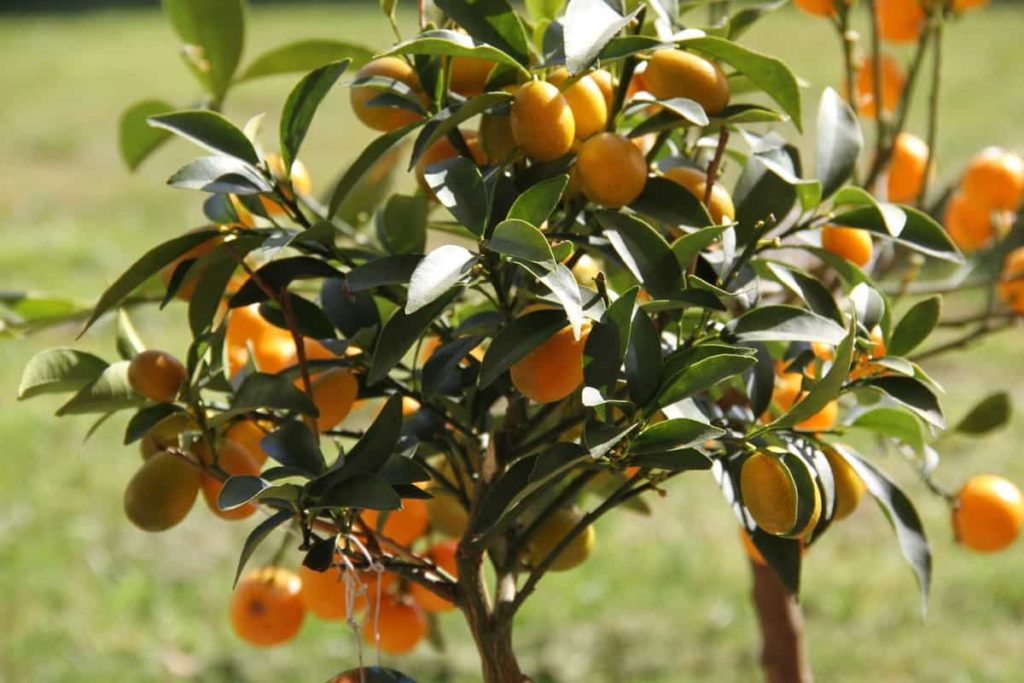
These are the things you should remember using fertilizers:
- Read and follow the instructions written on fertilizers.
- Do not be tempted to give too much fertilizer to the Kumquat.
You don’t fertilize the Kumquat tree until they are several months old; once you start fertilizing, do so in moderation. Like all citrus trees, Kumquats are heavy feeders and will benefit from moderate nitrogen-rich soils. Still, it also requires micronutrients and trace minerals – manganese and magnesium, iron, copper, boron, and zinc. Fertilizer should be applied in moderation every other month once the tree is established. Foliar spray or traditional soil fertilizer will be enough, but it is best to use a commercial compound designed for citrus trees. Reduce fertilizer or not at the end of fall when winter approaches.
How to fertilize Kumquat in pots
A little bit of acidic potting mix will work well for Kumquat plants. A better option is a mixture precisely prepared for citrus trees. Avoid alkaline soil and hard water, pointing out that if your tree leaves turn light green with dark green veins. The Kumquat trees need permanent moist soil without much water. You can water when the top 1 inch of soil is dry. Leaves need moisture and benefit from daily spray with water fog. You can help maintain moisture and ensure proper drainage with humidifiers.
You can place trays of rocks under the container to prevent the roots from sitting in the water. Avoid overfertilizing. You can use manganese, iron, and zinc-containing fertilizers. You should apply liquid fertilizers designed for citrus trees about once a month. Some gardeners reduce less than half of the amount given in the direction of fertilizer. Use organic fertilizers if possible. Kumquat trees appreciate the seaweed extract.
The small volume of nutrients in the soil in the pots disappears and is taken away in months and years. Maintain the level dressing of compost and amendments under mulch for pot trees, and consider using slow-release organic fertilizers if your pot-containing trees and perennials show nutrient deficiency signs.
In case you missed it: Lemon Gardening For Beginners, How To Start, FAQs
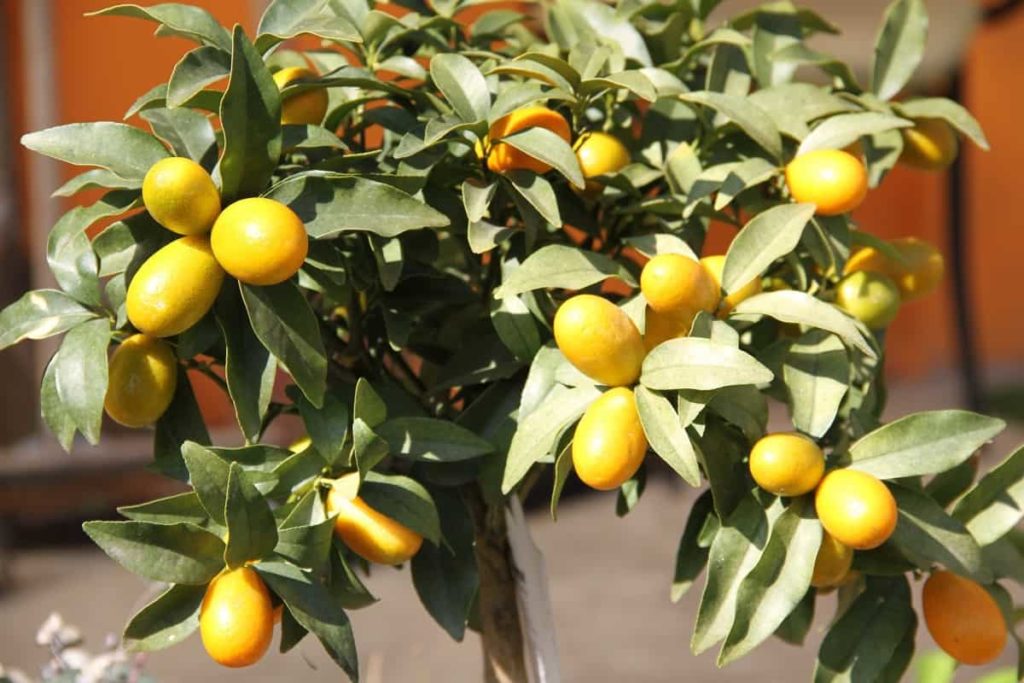
Frequently asked questions about fertilizers for Kumquat (FAQ)
Why are leaves falling from my Kumquat tree?
Too much or little available soil moisture can cause Kumquat trees to fall off leaves. Water is often applied very frequently in insufficient quantities. Kumquat cultivated in containers needs to be watered more often.
Why is my Kumquat tree not producing fruit?
Kumquat trees do not produce fruit due to factors like fertilizer quality, frequency of water, weather, and tree age. The common reason is that the Kumquat tree is small. With proper care, treatment and patience, the Kumquat tree can begin to bloom and bear fruit.
How do I make my Kumquat bloom?
If you wonder how to get blooms on the Kumquat tree, make sure the tree is planted in full sun, has rich, well-drained soil, and is appropriately pruned. Fertilize your Kumquat tree with zinc monthly with good quality, organic citrus fertilizer.
Why are my Kumquat leaves yellow?
Yellow and dim-looking leaves often mean that the plant lacks essential nutrients, magnesium or sulfur. Apply Epsom salt, and add it to the fertilizer once a month in the soil.
Why is my Kumquat tree dropping fruit?
Commonly, the causes of the Kumquat tree fruit drop include inconsistent watering, lack of nutrients, change in weather, or pest or disease attack.
In case you missed it: Lemon Growing Tips, Ideas, Secrets, and Techniques

How tall are the Kumquat trees?
Kumquat plants grow about 2.4 to 3.6 meters high. Branches are fork-free and contain shiny dark green leaves and white flowers, occurring singly or clustered in the leaf axils.
Why are my Kumquats not getting orange?
The most common reason citrus fruits fail to ripen is the lack of sunlight. Trees that grow under large trees or near buildings may not get enough sunlight to ripen their fruits. Trees planted very closely may also fail to produce ripe fruits.
Why are my Kumquat leaves curling?
A common cause of leaf curl in Kumquat is drought stress, but it is also easy to prevent. If the leaves turn inward while maintaining green and feel like the soil around your tree has dried when touched, you are not pouring enough water.
How long does the Kumquat tree take to produce fruit?
If a citrus seed grows well, it eventually produces a productive tree. But it can take ten to fifteen years. Some ideal conditions can bear fruit in about five years if you are lucky.
Can you grow a Kumquat from cutting?
You can grow Kumquat from seeds or take a cutting from the tree you already have to grow easier.
- Where to Place Indoor Plants in Your Home
- How to Grow Tomatoes Organically at Home: A Comprehensive Guide
- Organic Gardening on a Budget: Low-Cost Methods and Materials
- Gongura Seed Germination and Planting Methods
- Cabbage Seed Germination and Selection
- Broccoli Seed Germination and Selection
- Asparagus Seed Germination and Variety Selection
- Seasonal Flower Gardening: Best Practices for Spring, Summer, Fall, and Winter
- How to Grow Hibiscus from Flower
- Plantation Ideas for Home Decoration: A Beginners Guide
- Flower Garden Designs and Layouts for Beginners
- Planting and Spacing Techniques in Papaya: A Beginner’s Guide
- Growing Gold: Essential Techniques for Planting Pineapples
- How to Make Kalanchoe Plant Bushy: Home Remedies and Solutions
- 11 Reasons Why Your Gardenia is Not Blooming: Home Remedies and Solutions
- Eco Elegance: The Guide to Designing a Drought-Tolerant Landscape
- Gardening on a Slope: Strategies for Hillside Landscaping
- Nourish and Flourish: Top Organic Mulches for Thriving House Plants
- Everything You Want to Know about Indian Mogra Flower: Discover Uses and Growing
- Green Thumb Success: Expert Tips for Cultivating Greenhouse Pumpkins All Year Round
- Maximize Growth & Flavor: The Ultimate Guide to Companion Planting in Herb Gardens
- How to Control Rhododendron Problems Naturally: Home Remedies and Organic Ways to Fix Them
- Natural Magic: The Remarkable Benefits of Cinnamon for Plants
- Best Steps to Revive Dying Tulip with Natural and Organic Treatment
- 10 Reasons Why Your Angel Trumpet is Not Blooming: Remedies and Treatment
- How to Fix Periwinkle Leaf and Flower-Related Problems: Natural Remedies and Solutions
- How to Fix Zinnias Leaf and Flower Problems: Discover Natural and Home Remedies
- Organic Steps to Induce Lemon Tree Flowers: A Comprehensive Guide
- Bloom Booster: Crafting the Perfect Homemade Bougainvillea Fertilizer
- Optimizing Growth: A Guide to Applying NPK Fertilizer for Potted Plants
- 10 Best Homemade Fertilizers for Rubber Plant: DIY Recipes and Application Method
- How to Boost Female Pumpkin Flowers: Effective Steps for More Flowers and High Yields
- Transform Your Indoor Garden: Top Benefits of Pink Salt for Houseplants
- 10 Best Homemade Fertilizers for Peacock Plants (Calathea): Easy DIY Guide
- Unlock Blooms: 9 Reasons Why Your Potted Chrysanthemum is Not Blooming
- 8 Reasons Why Your Potted Hibiscus is Not Blooming: Fix it with Simple Solutions